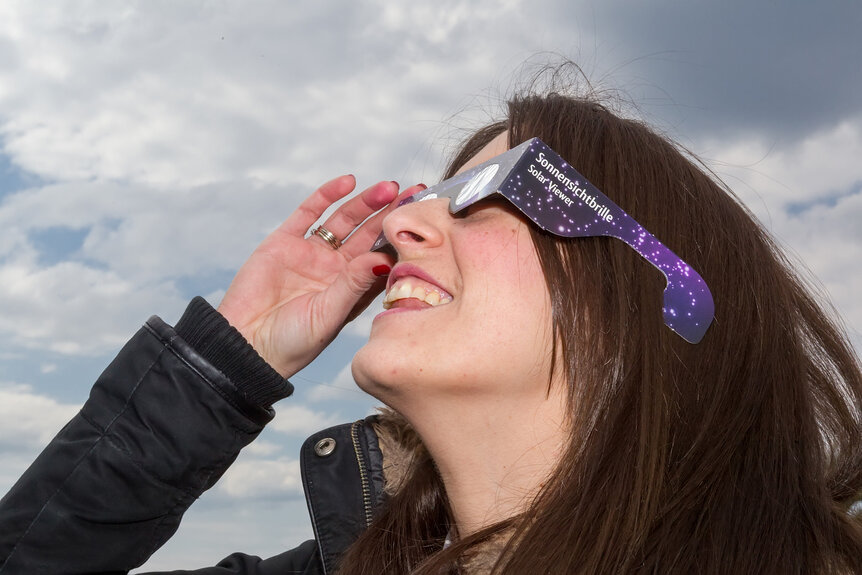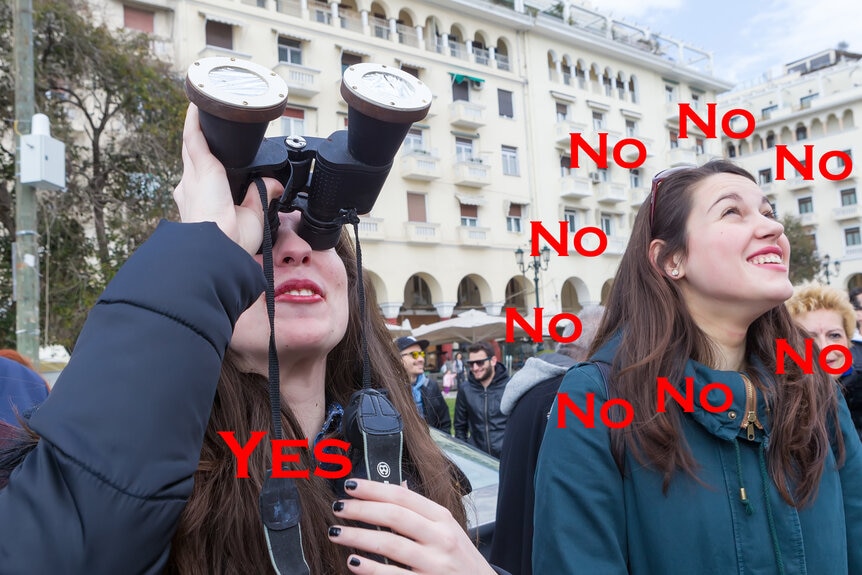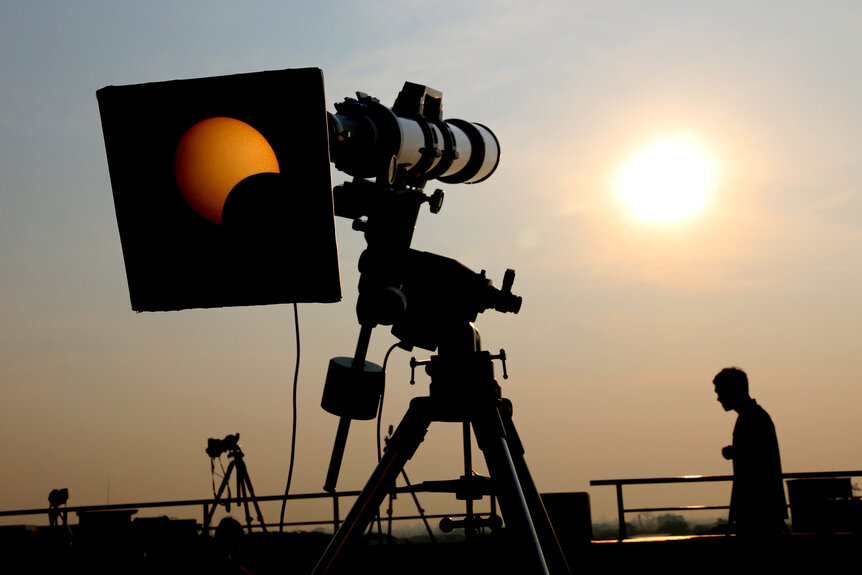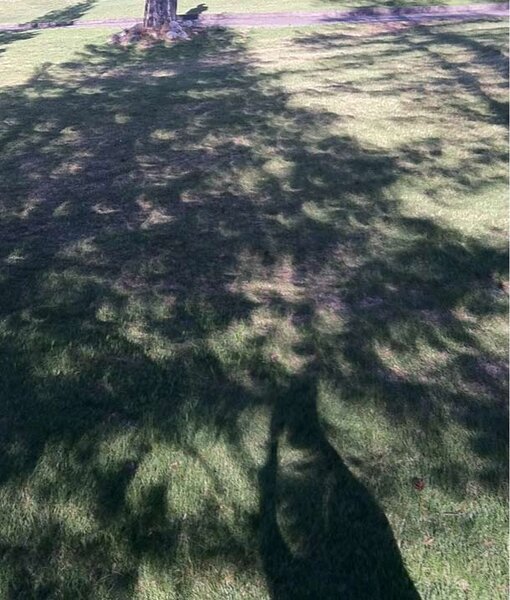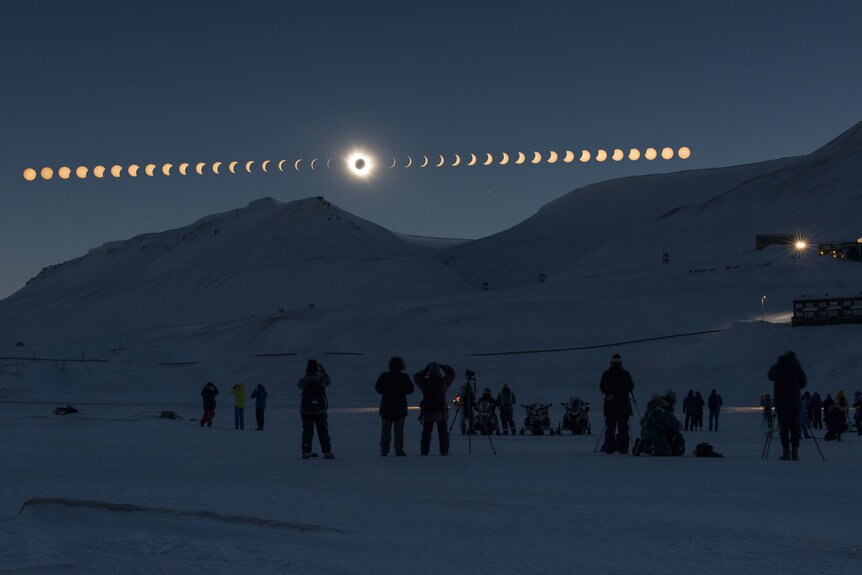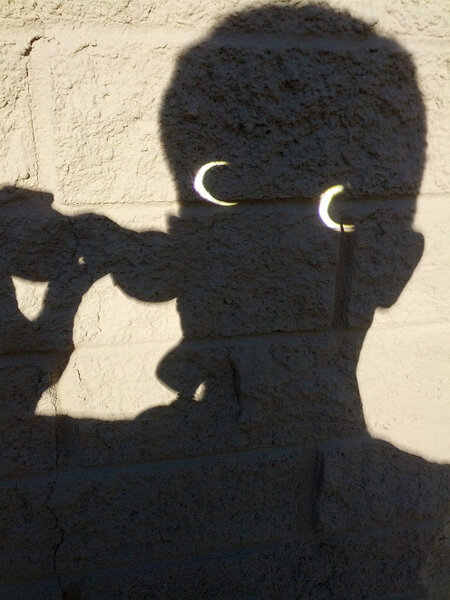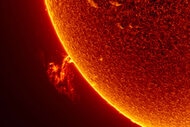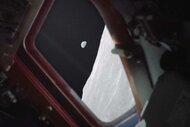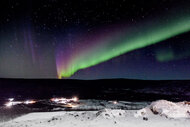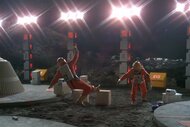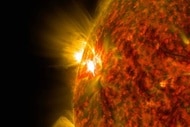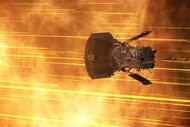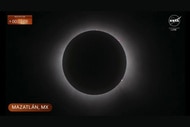Create a free profile to get unlimited access to exclusive videos, sweepstakes, and more!
The Great American Solar Eclipse of August 21, 2017 (Part 2)
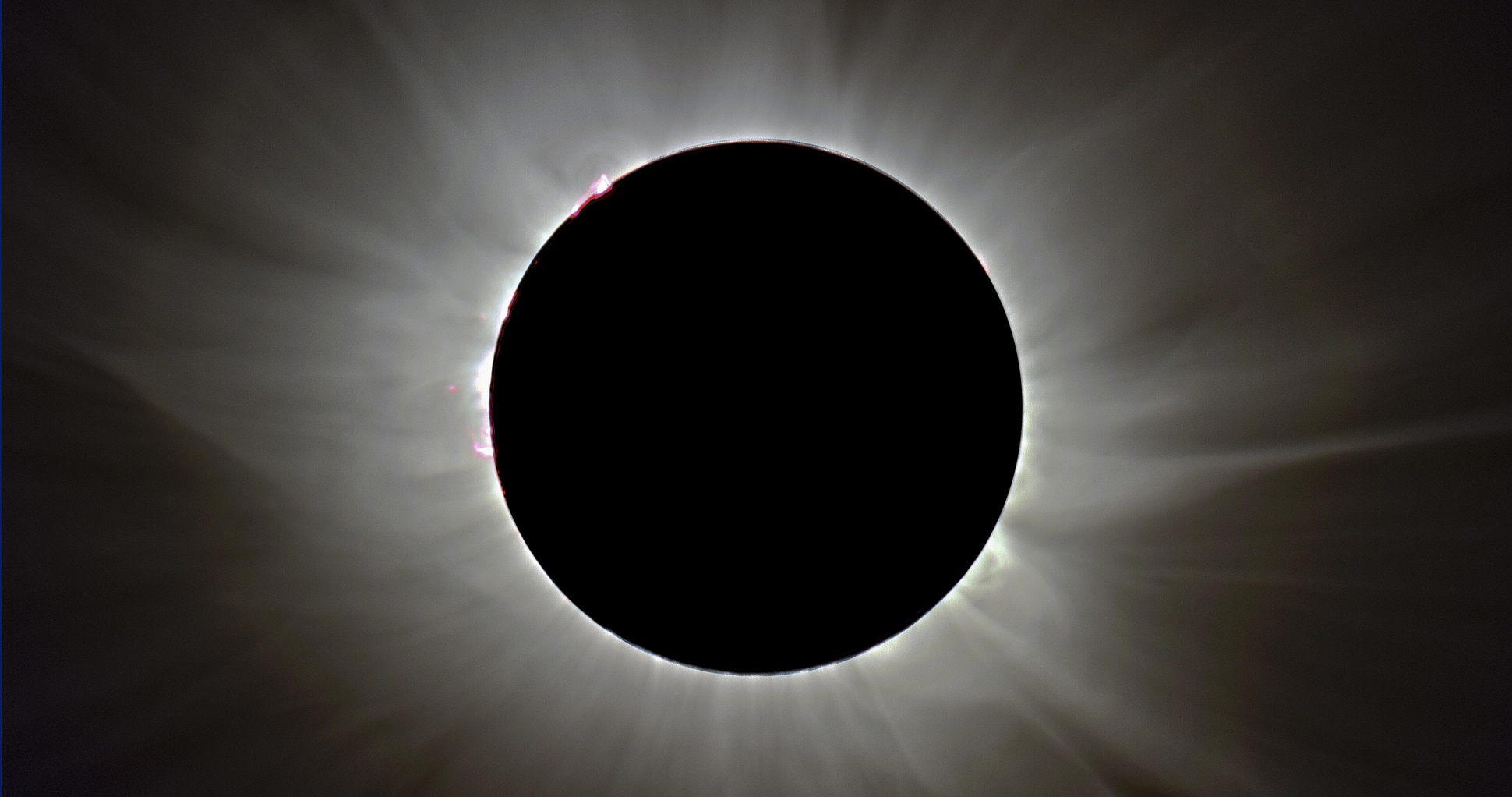
[Yesterday, I posted part 1 of this article, describing what an eclipse is, how they happen, and where you have to go to see it. Read that first. But there’s still a lot to know! In today’s article, Part 2, I’ll talk about how to safely observe it, what science we can learn from eclipses, and then link to a lot of sites with more info.]
How do I watch it?
Watching an eclipse safely isn’t all that hard to do; you just have to be careful. I’ve seen a lot of misinformation out there, so I’ll try to be thorough here. I’m not a doctor (of medicine) but I’ve done some reading about this. I suggest doing your own as well.
First: Yes, looking at the Sun is dangerous. Duh. The light is very intense, and looking at the Sun for more than a moment can damage your retina. In general, the damage is localized to small parts of the retina, and you won’t go completely blind (but you can permanently damage those parts, creating black spots in your vision). This is called solar retinopathy, and in many cases —though not all— the damage gets better over time. You likely won’t go permanently, completely blind by looking at the Sun, but long-term damage is certainly possible.
So why risk it? Don’t look directly at the Sun.
However, to be clear: Looking at the eclipse when it is total is safe; the Sun is completely blocked by the Moon and the corona is only about as bright as the full Moon. But the partial phases before and after totality are not safe to look at.
In fact, the moment when the Sun reappears at the end of totality (third contact) is the most dangerous time to be gazing at the Sun, because for a couple of minutes your eyes have been adjusting to the lower light level. Your pupils dilate, and a chemical called rhodopsin coats your retina, making it more sensitive to incoming light. That’s handy at night or when you enter a dark room, but once that flash of the raw surface of the Sun comes screaming in after totality it can do serious damage to your eye.
I suggest finding out exactly how long totality lasts at your location, and give yourself plenty of padding toward the end so that flash of sunlight doesn’t zap your retinae.
So then, how do you observe it?
You need to use properly filtered equipment to view the Sun safely. In general, home-grown filters are a bad idea. So do not use things like sunglasses, exposed color film (if you can even find that anymore), DVDs, or mylar to look through. These all let through too much ultraviolet and/or infrared light, which can damage your eyes.
A good list of what to do and what not to do can be found at Fred Espenak’s Mr. Eclipse site.
Up until totality, when the eclipse is still partial, you still have lots of options. The easiest is to get a set of eclipse glasses. Lots of different kinds are available, and many are very inexpensive —they’re made of cardboard and have very dark filters to block most of the sunlight (generally 99.999% of it —the equivalent of an ND5 filter).
NASA has some info on this, and lots of reputable places sell them (I’m hearing that local places like camera stores and such are selling them too, and many public libraries are giving them away as well). See the links list below at the end of the post.
You can also use equipment like telescopes and binoculars but HOLY SWEET MOTHER OF SYZYGIES do not do this unless you know what you’re doing, and even then be very very careful! Telescopes and other optical aids are designed to bring lots of light into your eye, and if they are unfiltered or not filtered correctly the damage you do will be extremely bad. You could literally destroy your retinae.
Also, some department store telescopes come with a “sun filter” that attaches to the end of the eyepiece. These are extraordinarily dangerous! All that light from the telescope is being focused onto a small, dark piece of glass. It can heat up and crack or even shatter. You probably don’t want your eye next to an eyepiece that does that.
You want equipment that filters the light before it gets into the optics, either stuff that’s designed to look at the Sun, or that have filters that fit over the front end so very little raw sunlight gets in.
Celestron sells filtered binoculars; I have two pair they sent me and I like them. They’re useful for when there are big sunspots, too, but they can only be used to look at the Sun. Everything else is nowhere near bright enough to get through the filters. They also have other safe viewing equipment, too, like a small ‘scope, and filters you can fit over the end of a telescope.
Lunt is another company I’m familiar with, and they have a line of observing equipment as well. You can find lots more companies online. Just be careful to make sure they are a solid company; scam artists are everywhere, and you don’t want to screw around with your eyesight.
If you don’t want to spend a lot of money, you can make yourself a pinhole projector, and all you need is a couple of pieces of stiff paper. Punching a tiny hole in one piece of paper (or poster board) can allow you to project a tiny image of the Sun onto the second piece. It’s crude, but it’ll work decently well for the partial phases. You can find more info on how this works and how to make one on Wikipedia.
If you have binoculars with no filters, you can also use them to project the image of the Sun on a piece of paper. Don’t look through them! Just hold them and aim them by hand. I’ve done this and it works pretty well (it helps to block one of the lenses so you’re only using the other one). I’ll note that this can damage the optics because you’re focusing all that light onto the eyepieces, so do this at your own risk.
As for me, I’m taking a group of folks into the wilds of Wyoming for the event, so I’m bringing lots of equipment. I have the binoculars I mentioned, as well as a small but heavily filtered telescope, a solar telescope, my 20 cm telescope with a filter, and lots of eclipse glasses for my guests. I plan on using all the filtered stuff for the partial phases, then just using my eyeballs when totality hits. I might use unfiltered binoculars or even a telescope for totality, but only for literally about one minute. I don’t want anyone near unfiltered equipment when totality ends.
So please, be careful! I want y’all to see this, but I want you to see it safely.
Besides the eclipse itself, what else should I look out for?
There are lots of other things to watch for during the eclipse besides seeing it directly.
Speaking of pinhole cameras, leaves on trees can have tiny holes in them, and act as pinhole cameras. If you look on the ground into a tree’s shadow, you might see the eclipse playing out replicated hundreds of times! My friend Anne Wheaton took a great photo of that for an eclipse in 2012:
Who knew a cool view of an eclipse could be had by looking down? Here’s a wonderful video of that same thing, too.
There are other effects to watch out for too. Ripples of light and shadows have been reported to move across the ground just before and after totality; this may be due to optical effects called constructive and destructive interference as the light from the Sun goes past the Moon. I don’t think it’s terribly well understood what causes it. I’m hoping to see it.
Also, the sky itself may put on a show, especially if you have decent horizons and hazy air. The deepest part of the shadow of the Moon is only about 100 km across or so, and so if you’re in a flat area, you can see from one edge of the Moon’s shadow to the other on the sky itself. Here’s a photo of that, one of my favorite eclipse shots, taken by the wonderful astrophotographer Tunç Tezel in Queensland, Australia.
What you’re seeing there is the edge of the shadow of the Moon darkening the sky itself! Where Tunç was standing the eclipse was total, but on the left and far right the eclipse was still partial, so the sky is brighter there.
What about taking pictures?
Speaking of which, taking photos of the eclipse is tricky. The Sun is actually very small in most cameras, so unless you have a decent telephoto you might not see much in the photos. Instead of going into detail, I’ve added a bunch of links below with tons more information.
People have sent me their photos from previous eclipses, and I love the creativity and originality so many folks display. Maybe I’ll do the same thing for this eclipse, too. Stay tuned.
In the meantime, if you do plan on taking photos, think about what happens during an eclipse and where you’ll be, and how that might make for interesting pictures. Fun foreground objects can help, as well as unusual perspectives. Be creative!
Or don’t. I have final piece of advice for this, and I really think you should heed it: If this is your first eclipse, consider not taking any pictures or videos. Instead, just experience it. I plan on limiting my own picture taking for this very reason. I’ve been through something like this before —a Space Shuttle launch back in 1997. A friend advised me just to watch instead of record it, and I foolishly ignored him. I missed truly experiencing the launch, and all I have to show for it is blurry video.
So just watch it. Be a part of it in the moment, instead of trying to capture it for later.
Oh, and hey: If you can’t travel, or it’s cloudy where you are, there will be lots of live streams online for it. Try Googling “eclipse live stream” and you’ll find approximately a bazillion of them. I have a list at the end of the post of a few that can get you started.
Is there any science to be done during the eclipse?
Eclipses are pretty well understood these days, so new discoveries are a bit rare. Professional astronomers may map the corona and look at the Sun’s surface features, but we have satellites that can do this 24/7 across the electromagnetic spectrum. They don’t need eclipses in space to do this! [Updated to add: Within hours of posting this I see that scientists at Southwest Research Institute will be using the eclipse to study the Sun's outer corona and the surface of Mercury! I'm glad to be shown wrong here.][Update 2 (Aug 1, 2017)! This article by astronomer and umbraphile Jay Pasachoff has more info on science can be done during an eclipse.] [Update 3 (Aug. 9, 2017): More science of the corona that will be done during the eclipse.]
But that doesn’t mean there’s no science to be found here; there are still some things to be done, and some you can participate in!
For example, NASA is looking for people to participate in collecting scientific data by measuring cloud and temperature information during the eclipse. This is a great idea for students.
Google and scientists at Berkeley have created the Eclipse MegaMovie project, collecting thousands of eclipse photos from all along the totality path to create a single movie showing what the eclipse looked like all across the U.S. This is a pretty interesting idea, and I’m curious to see how it’ll work.
And of course there’s always the unknown. We are entering a new age of eclipse viewing; millions of people are carrying around pretty reliable digital detectors with them, and even if some phenomenon is statistically rare, there are so many people watching that we may catch something weird. So here’s hoping!
And a final note: Science has helped us improve our ability to watch this eclipse. We now have elevation maps of the Earth more accurate than ever before. We also have so much data from lunar satellites that scientists can create a “shape map” of the Moon, modeling its 3D structure. Together, these can be used to make the most accurate prediction of where the shadow will fall than ever before! There’s even a cool video of it:
Isn’t that nifty? Science makes everything better. In fact, now that you’ve read all this (and thanks for that!) you have a far better understanding of eclipses than most people have had since the dawn of human history. Why? Because of science. Eclipses used to be feared, misunderstood. But now we know why they happen, how they happen, and so when you gaze upward in awe at this most wondrous astronomical event, you’ll know more about it, and have a better appreciation of it as well.
Enjoy it! And if you miss it, never fear: We get another one on April 8, 2024.
More info
I can’t possibly cover everything about eclipses here; literally whole books have been written about it. In fact, I wrote the foreword for one called “Totality: The Great American Eclipses of 2017 and 2024”, written by Mark Littman and Fred Espenak. It’s really good, with tons of info, but also lots of personal stories about how people were affected by seeing an eclipse. I really recommend getting it.
There are lots of other books with general info about eclipses including their history and how we found out more about them. Search your favorite bookstore and you’ll find plenty. Sky and Telescope magazine has a list of books and guides, too.
Since I can’t include every bit of eclipse info, here are some sites with more. Even this isn’t an exhaustive list; but Google is your friend. Just have a care when searching! Not all information is equal, and make sure you’re reading something from someone who actually knows what they’re talking about. Most science communicators I’ve seen have been doing a fine job, and you’ll generally get reliable info from science magazines, museums, NASA, and the like.
General Information
- NASA
- Eclipse 2017
- The Great American Eclipse
- Sky and Telescope magazine
- The US Naval Observatory (includes technical data)
Viewing Equipment
- Celestron
- Lunt
- Meade
- Astronomers Without Borders
- Libraries giving away eclipse glasses
- AAS list of eclipse glasses and filters resources
Viewing safety information
- The Exploratorium
- Mr. Eclipse (Fred Espenak’s site)
- My own blog
- Celestron (with several videos)
- NASA
- The American Astronomical Society
Live Streams
- Eclipse.stream.live
- The Exploratorium
- Time and Date
- Slooh
- NASA has several streams
Apps and software
- AAS list of apps and software
- Map of the sky during the eclipse
- Totality: Big Kid Science app (I have this and it’s fun)
- Google/Berkeley Megamovie project
Photography tips
